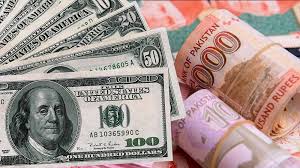Dollar to PKR Open Market
The dollar to PKR open market rate plays a crucial role in Pakistan’s economy, influencing everything from daily commodity prices to the stock market. Keeping up with the fluctuations in the USD to PKR rate is essential for businesses, travelers, and investors. In this article, we’ll explore the various aspects of the dollar-to-PKR conversion, analyze trends, and discuss the factors that impact the rate in the open market.
Understanding the Open Market and Interbank Rate
In Pakistan, two primary rates determine the conversion between the US Dollar (USD) and the Pakistani Rupee (PKR): the open market rate and the interbank rate.
- Interbank Rate: This is the rate at which banks exchange currencies between themselves. It is often more stable and slightly lower than the open market rate.
- Open Market Rate: The open market rate refers to the value of the currency as traded by money exchangers and the general public. It is influenced by supply and demand in the public marketplace and tends to be higher than the interbank rate due to fewer restrictions and regulations.
Factors Influencing Dollar to PKR Open Market Rate
Several factors drive the volatility in the dollar to PKR open market rate. These factors are dynamic and can shift due to local and global events.
1. Political Stability
Political uncertainties in Pakistan have a direct impact on the currency exchange rate. Whenever there is political unrest or instability, the PKR tends to weaken against the USD due to a lack of confidence in the market. Foreign investors pull back, and local businesses demand more dollars to hedge against possible economic downturns, increasing the demand for USD in the open market.
2. Economic Indicators
Inflation, foreign reserves, and trade deficits are significant indicators that influence the PKR’s value. When inflation rises, the value of the Pakistani Rupee decreases, making it more expensive to buy US dollars. Similarly, a trade deficit (when Pakistan imports more than it exports) puts pressure on the PKR as more dollars are required to settle international trade.
3. Global Oil Prices
Pakistan is a major importer of oil, and global oil prices have a considerable impact on the PKR’s exchange rate. When oil prices increase globally, Pakistan’s import bill rises, increasing demand for dollars and depreciating the Pakistani Rupee in the open market.
4. Remittances and Foreign Inflows
The flow of remittances from overseas Pakistanis has a stabilizing effect on the PKR. Remittances contribute a large portion of foreign reserves and can strengthen the PKR against the USD. Any drop in remittances results in a higher demand for dollars in the open market.
Daily Trends in Dollar to PKR Open Market Rates
The dollar to PKR open market rate fluctuates on a daily basis, driven by both local and international factors. Here’s what you should consider when tracking these trends:
- Morning Rates: The rates may be lower early in the morning when the market opens.
- Mid-Day Fluctuations: As trading continues and new economic reports are released, there can be significant swings in the rate.
- End-of-Day Adjustments: By the end of the trading day, rates may adjust based on global economic news and the closing rates in international currency markets.
How to Monitor the Dollar to PKR Open Market Rate
Several online platforms and financial institutions provide real-time updates on the USD to PKR open market rate. These include:
- State Bank of Pakistan (SBP): Although SBP primarily controls the interbank rate, it offers insights into overall currency trends.
- Exchange Companies: Platforms such as Link Exchange provide up-to-the-minute updates on the dollar to PKR open market rates, making it easy for customers to track fluctuations.
- Currency Trading Apps: Mobile applications allow users to monitor exchange rates and receive notifications on significant movements.
Why the Open Market Rate is Higher Than the Interbank Rate
Many consumers notice that the open market rate is generally higher than the interbank rate. This is because the open market involves smaller, private transactions that aren’t regulated as strictly as the interbank system. Furthermore, the demand for dollars is often higher among individuals and small businesses, leading to inflated prices in the open market.
How Importers and Exporters are Affected
Importers
For Pakistani importers, the dollar to PKR open market rate is a crucial factor in determining their costs. When the PKR weakens against the dollar, the cost of importing goods increases, which in turn raises prices for consumers. This can lead to inflationary pressures within the local economy, driving up the prices of essential goods.
Exporters
On the other hand, a weaker PKR benefits exporters as their goods become cheaper for foreign buyers. This can boost exports, as Pakistani products become more competitive in the global market. However, if the PKR depreciates too quickly, it can create economic uncertainty, discouraging long-term investments. Get the best money transfer services in Pakistan provided by Link Exchange.
Impact of Government Policies on the Dollar to PKR Open Market Rate
The State Bank of Pakistan (SBP) and the government play a critical role in managing the exchange rate. They implement various monetary and fiscal policies to stabilize the PKR and control inflation. These measures include adjusting interest rates, managing foreign reserves, and enacting import/export policies.
For instance, when the SBP raises interest rates, it can attract foreign investment, strengthening the PKR. Conversely, if the government imposes restrictions on the import of luxury goods, it can reduce the demand for dollars, thereby stabilizing the PKR in the open market.
Forecasts for the Dollar to PKR Open Market Rate
While it’s difficult to predict the exact movements of the USD to PKR exchange rate, analysts generally expect continued volatility due to a variety of global and domestic factors. As long as Pakistan faces a high import bill, low foreign reserves, and political uncertainties, the PKR will remain under pressure. However, improvements in foreign remittances, economic reforms, and increased exports could provide much-needed stability.
Conclusion
The dollar to PKR open market rate is a complex metric influenced by political, economic, and global factors. By keeping track of the daily trends and understanding the underlying drivers of these fluctuations, businesses and individuals can make informed financial decisions.





